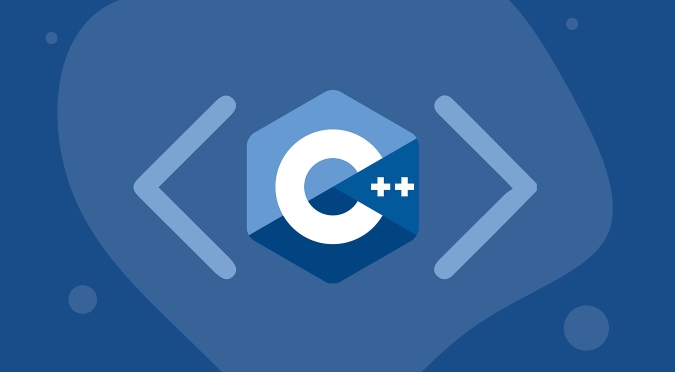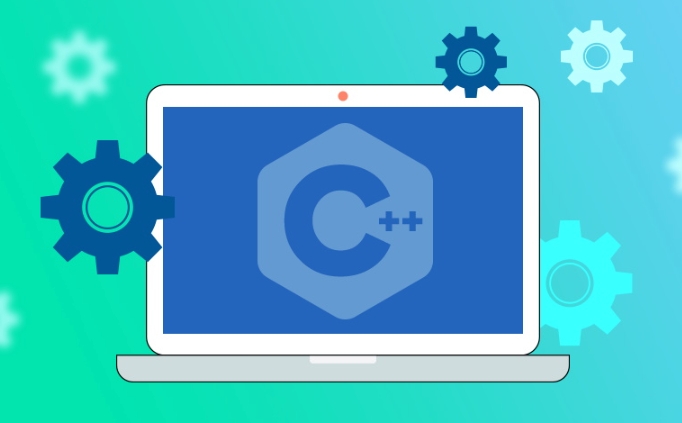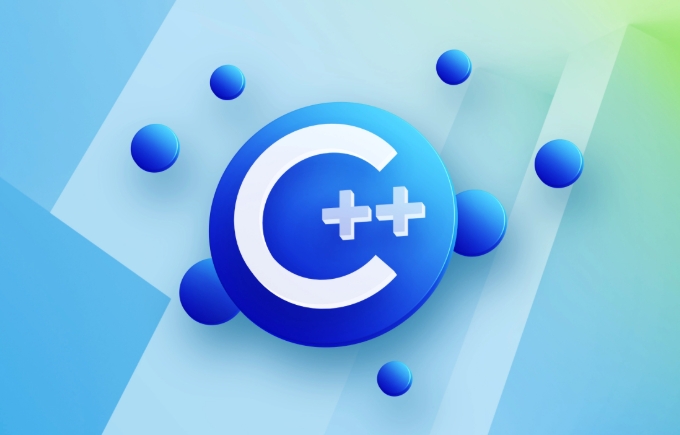在C中使用std :: Chrono
std::chrono在C 中用於處理時間,包括獲取當前時間、測量執行時間、操作時間點與持續時間及格式化解析時間。 1. 獲取當前時間使用std::chrono::system_clock::now(),可轉換為可讀字符串但係統時鐘可能不單調;2. 測量執行時間應使用std::chrono::steady_clock以確保單調性,並通過duration_cast轉換為毫秒、秒等單位;3. 時間點(time_point)和持續時間(duration)可相互操作,但需注意單位兼容性和時鐘紀元(epoch)差異;4. C 20支持時間格式化與解析,需使用std::format和std::parse,依賴編譯器對C 20的支持。

Using std::chrono in C can be really useful once you get the hang of it. It's part of the standard library and gives you solid tools for handling time — whether that's measuring durations, working with timestamps, or dealing with time zones in C 20 and beyond.

Getting the current time
To grab the current point in time, you usually go with std::chrono::system_clock::now() . That gives you a time_point representing right now.
auto now = std::chrono::system_clock::now();
This is often used when you want to measure how long something takes or just log a timestamp. If you need to convert it to something readable like a string, you'll typically convert it to time_t and use ctime or similar:

std::time_t now_c = std::chrono::system_clock::to_time_t(now); std::cout << "Current time: " << std::ctime(&now_c);
Keep in mind that system_clock might not be monotonic — if someone changes the system time, it could jump forward or backward. For timing purposes, read on.
Measuring execution time accurately
When you want to measure how long a piece of code runs, steady_clock is your friend. It's monotonic (won't go backwards), which makes it safe for timing.

Here's a common pattern:
auto start = std::chrono::steady_clock::now(); // ... do some work ... auto end = std::chrono::steady_clock::now(); auto duration = end - start;
If you want to show this in milliseconds or seconds, you'll cast it using duration_cast :
auto ms = std::chrono::duration_cast<std::chrono::milliseconds>(duration).count(); std::cout << "Took " << ms << " ms\n";
You can also use microseconds , nanoseconds , or even seconds . Just keep in mind that converting from higher precision (like nanoseconds) to lower (like seconds) will truncate unless you cast properly.
Working with time points and durations
- A time_point is a specific moment.
- A duration is a span of time (like 5 seconds).
They're separate types, but they work together. You can add a duration to a time_point to get a new time_point:
auto then = now std::chrono::hours(2);
This is handy when scheduling events or waiting until a certain time. Just make sure both sides of the operation are using compatible units — mixing hours and milliseconds won't cause errors, but it might not do what you expect unless you explicitly convert.
Also, don't assume that all clocks start at zero — their epoch (starting point) varies:
-
system_clocktypically starts in 1970 (like Unix time). -
steady_clockhas an arbitrary epoch, so comparing its time_points across runs doesn't make sense.
Formatting and parsing time (C 20 )
With C 20, <chrono> got better support for formatting dates and times directly:
auto now = std::chrono::system_clock::now();
std::cout << "Formatted: " << std::format("{:%Y-%m-%d %H:%M}", now) << "\n";Parsing time strings also became possible:
std::istringstream ss("2024-03-15 12:30");
std::chrono::system_clock::time_point tp;
ss >> std::parse("%Y-%m-%d %H:%M", tp);This is super helpful when reading logs or config files with timestamps. But remember, these features require C 20 and good compiler support (like GCC 13 , Clang 15 , or MSVC with latest STL).
So yeah, std::chrono is pretty powerful once you understand the basic types and when to use each clock. Not too hard, just a bit easy to mix up at first.
以上是在C中使用std :: Chrono的詳細內容。更多資訊請關注PHP中文網其他相關文章!

熱AI工具

Undress AI Tool
免費脫衣圖片

Undresser.AI Undress
人工智慧驅動的應用程序,用於創建逼真的裸體照片

AI Clothes Remover
用於從照片中去除衣服的線上人工智慧工具。

Clothoff.io
AI脫衣器

Video Face Swap
使用我們完全免費的人工智慧換臉工具,輕鬆在任何影片中換臉!

熱門文章

熱工具

記事本++7.3.1
好用且免費的程式碼編輯器

SublimeText3漢化版
中文版,非常好用

禪工作室 13.0.1
強大的PHP整合開發環境

Dreamweaver CS6
視覺化網頁開發工具

SublimeText3 Mac版
神級程式碼編輯軟體(SublimeText3)
 在PHP中評論代碼
Jul 18, 2025 am 04:57 AM
在PHP中評論代碼
Jul 18, 2025 am 04:57 AM
PHP註釋代碼常用方法有三種:1.單行註釋用//或#屏蔽一行代碼,推薦使用//;2.多行註釋用/.../包裹代碼塊,不可嵌套但可跨行;3.組合技巧註釋如用/if(){}/控制邏輯塊,或配合編輯器快捷鍵提升效率,使用時需注意閉合符號和避免嵌套。
 撰寫PHP評論的提示
Jul 18, 2025 am 04:51 AM
撰寫PHP評論的提示
Jul 18, 2025 am 04:51 AM
寫好PHP註釋的關鍵在於明確目的與規範,註釋應解釋“為什麼”而非“做了什麼”,避免冗餘或過於簡單。 1.使用統一格式,如docblock(/*/)用於類、方法說明,提升可讀性與工具兼容性;2.強調邏輯背後的原因,如說明為何需手動輸出JS跳轉;3.在復雜代碼前添加總覽性說明,分步驟描述流程,幫助理解整體思路;4.合理使用TODO和FIXME標記待辦事項與問題,便於後續追踪與協作。好的註釋能降低溝通成本,提升代碼維護效率。
 通過評論提高可讀性
Jul 18, 2025 am 04:46 AM
通過評論提高可讀性
Jul 18, 2025 am 04:46 AM
寫好註釋的關鍵在於說明“為什麼”而非僅“做了什麼”,提升代碼可讀性。 1.註釋應解釋邏輯原因,例如值選擇或處理方式背後的考量;2.對複雜邏輯使用段落式註釋,概括函數或算法的整體思路;3.定期維護註釋確保與代碼一致,避免誤導,必要時刪除過時內容;4.在審查代碼時同步檢查註釋,並通過文檔記錄公共邏輯以減少代碼註釋負擔。
 編寫有效的PHP評論
Jul 18, 2025 am 04:44 AM
編寫有效的PHP評論
Jul 18, 2025 am 04:44 AM
註釋不能馬虎是因為它要解釋代碼存在的原因而非功能,例如兼容老接口或第三方限制,否則看代碼的人只能靠猜。必須加註釋的地方包括複雜的條件判斷、特殊的錯誤處理邏輯、臨時繞過的限制。寫註釋更實用的方法是根據場景選擇單行註釋或塊註釋,函數、類、文件開頭用文檔塊註釋說明參數與返回值,並保持註釋更新,對複雜邏輯可在前面加一行概括整體意圖,同時不要用註釋封存代碼而應使用版本控制工具。
 快速PHP安裝教程
Jul 18, 2025 am 04:52 AM
快速PHP安裝教程
Jul 18, 2025 am 04:52 AM
ToinstallPHPquickly,useXAMPPonWindowsorHomebrewonmacOS.1.OnWindows,downloadandinstallXAMPP,selectcomponents,startApache,andplacefilesinhtdocs.2.Alternatively,manuallyinstallPHPfromphp.netandsetupaserverlikeApache.3.OnmacOS,installHomebrew,thenrun'bre
 學習PHP:初學者指南
Jul 18, 2025 am 04:54 AM
學習PHP:初學者指南
Jul 18, 2025 am 04:54 AM
易於效率,啟動啟動tingupalocalserverenverenvirestoolslikexamppandacodeeditorlikevscode.1)installxamppforapache,mysql,andphp.2)uscodeeditorforsyntaxssupport.3)
 PHP開發環境設置
Jul 18, 2025 am 04:55 AM
PHP開發環境設置
Jul 18, 2025 am 04:55 AM
第一步選擇集成環境包XAMPP或MAMP搭建本地服務器;第二步根據項目需求選擇合適的PHP版本並配置多版本切換;第三步選用VSCode或PhpStorm作為編輯器並搭配Xdebug進行調試;此外還需安裝Composer、PHP_CodeSniffer、PHPUnit等工具輔助開發。
 PHP評論語法
Jul 18, 2025 am 04:56 AM
PHP評論語法
Jul 18, 2025 am 04:56 AM
PHP註釋有三種常用方式:單行註釋適合簡要說明代碼邏輯,如//或#用於當前行解釋;多行註釋/*...*/適合詳細描述函數或類的作用;文檔註釋DocBlock以/**開頭,為IDE提供提示信息。使用時應避免廢話、保持同步更新,並勿長期用註釋屏蔽代碼。







